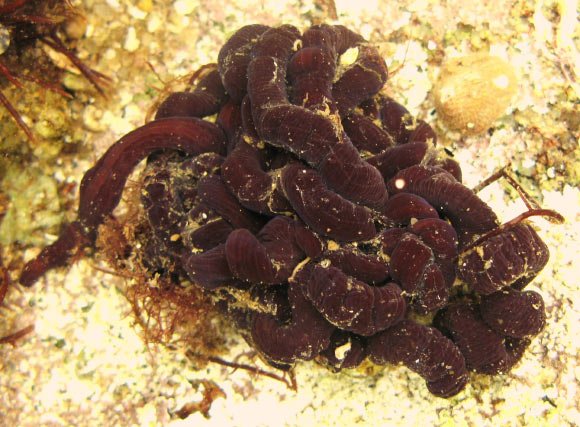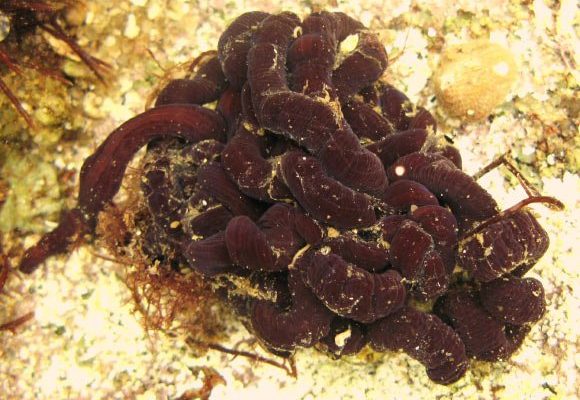
You might be wondering why these color differences matter. Well, just like the vibrant hues of tropical fish indicate their habitat’s health, bootlace worm colors tell us about their geographical ranges and the ecosystems they belong to. So, grab a cup of coffee, and let’s dive into the colorful world of bootlace worms and explore how their color variations are influenced by geography!
What Are Bootlace Worms?
Before we dive into color variations, let’s take a moment to understand what bootlace worms are. These fascinating creatures belong to the phylum Nemertea, which is a group of worms known for their unique features, like a long, ribbon-like body. They can grow incredibly long—some even exceed 30 meters! That’s over 98 feet!
Bootlace worms are usually found in marine environments, living in coastal waters around the world. They play a crucial role in the ecosystem, preying on small invertebrates and serving as food for various fish species. Their bodies are not just long; they can also be colorful. This variety in color can often be attributed to the different environments they inhabit.
You’ll find them in places that vary in temperature, salinity, and other environmental factors. These factors contribute to the differences in colors we see across their geographical ranges. Now, let’s explore those vibrant colors!
Color Variations: What to Expect
Color variations in bootlace worms can be quite dramatic. Depending on where they live, you might see them in shades of green, brown, yellow, or even red. This striking array of colors isn’t just for show. It’s often a reflection of their surroundings, blending with the seaweed, sand, and other elements in their habitat.
For example, in shallow coastal waters with a lot of seagrass, you might notice bootlace worms that are a deep green color. This helps them camouflage against potential predators. In contrast, those found in deeper waters may have a more muted tone, like browns and grays, as there is less light and fewer colorful surroundings.
In essence, the color of a bootlace worm can tell you a lot about its environment. If you spot a bright-colored worm, it could mean it’s in a healthy, vibrant ecosystem rich in nutrients. Isn’t that amazing?
The Science Behind Color Changes
You might be curious about how exactly these worms change colors. The process largely hinges on the presence of pigments in their skin, just like how some animals have colorful feathers or scales. Bootlace worms contain special pigments that react to different environmental factors.
The most notable pigments include carotenoids, which can give the worms a yellow or orange hue, and melanin, which can result in darker colors. When bootlace worms sense changes in their environment—like shifts in temperature or salinity—they can activate these pigments to alter their appearance.
Think of it like how we humans tan in the sun. Just as our skin adapts to protect against UV rays, bootlace worms can tweak their colors to better fit their surroundings and perhaps even to signal to others about their conditions.
Geographic Variations: From Europe to the Americas
As we explore bootlace worms across different geographic ranges, their colors become even more intriguing. In Europe, for instance, the bootlace worms are often a striking electric blue or green. This bright coloration is thought to be a response to the cooler temperatures and nutrient-rich waters of the North Atlantic.
In contrast, bootlace worms found along the coasts of North America tend to showcase more earthy tones, like browns and olive greens. This difference illustrates how geographic factors—such as local climate, water composition, and available food sources—affect the biology and coloration of these amazing creatures.
If you ever travel to different coastal waters, keep your eyes peeled! You might get the chance to see these variations firsthand, almost like natural art pieces painting the ocean floor.
The Impact of Human Activity
Unfortunately, human activity can play a significant role in the color variations of bootlace worms. Pollution, habitat destruction, and climate change all impact marine ecosystems. When waters become polluted, the nutrients and microorganisms that bootlace worms rely on can be compromised.
Pollution can lead to a decline in specific pigments, changing the coloration of these worms. For instance, if a normally vibrant color enhances their camouflage, the introduction of toxins can cause these colors to fade or alter, making them more vulnerable to predators.
Additionally, climate change can affect the water temperature and salinity, both crucial factors in determining the health of marine life. As these factors shift, we could see changes in bootlace worm populations and their iconic colors.
How Color Variations Affect Behavior
You might wonder if these color changes affect how bootlace worms behave. The answer is yes! The colors serve not only as camouflage but can also play a role in communication among worms.
For example, brighter colors can signal health and vigor, attracting mates during the breeding season. Conversely, if a worm’s color starts to dull, it could be a sign of stress or illness. Other worms may instinctively avoid these less vibrant individuals, protecting themselves from potential danger.
The interplay of color, behavior, and environmental factors creates a fascinating dynamic. It’s like a dance of life where every worm plays its part!
Conservation Efforts and the Future of Bootlace Worms
As we admire the beauty and complexity of bootlace worms, it’s crucial to consider their future. Conservation efforts are vital in protecting marine ecosystems—the home of these incredible creatures.
Organizations are working to reduce pollution, protect habitats, and combat climate change, all of which can help ensure the survival of bootlace worms. Public awareness and education about the importance of marine biodiversity play a significant role in these efforts as well.
You can contribute by supporting sustainable practices in your community and advocating for policies that protect coastal environments. The more we care for our oceans, the more vibrant—and colorful—the bootlace worms will remain.
In conclusion, bootlace worms are more than just an intriguing species; they are a vibrant testament to the beauty of marine life and the importance of our ecosystems. Their color variations across geographic ranges offer valuable insights into the health of our oceans. By understanding and conserving these fascinating creatures, we can help preserve a colorful future for generations to come.

